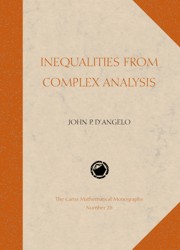Book contents
- Frontmatter
- Contents
- Preface
- I Complex Numbers
- II Complex Euclidean Spaces and Hilbert Spaces
- III Complex Analysis in Several Variables
- IV Linear Transformations and Positivity Conditions
- V Compact and Integral Operators
- VI Positivity Conditions for Real-valued Functions
- VII Stabilization and Applications
- VIII Afterword
- Appendix A
- Bibliography
- Index
Appendix A
- Frontmatter
- Contents
- Preface
- I Complex Numbers
- II Complex Euclidean Spaces and Hilbert Spaces
- III Complex Analysis in Several Variables
- IV Linear Transformations and Positivity Conditions
- V Compact and Integral Operators
- VI Positivity Conditions for Real-valued Functions
- VII Stabilization and Applications
- VIII Afterword
- Appendix A
- Bibliography
- Index
Summary
This terse appendix provides some basic information on the prerequisites for this book. It consists of definitions and statements of some concepts and results used, but not developed, in the book.
Algebra
Definition. (Group) Agroup is a mathematical system consisting of a set G, a binary operation, (g, h) ↦ gh, and a distinguished element 1, such that the following hold:
1) (1 is the identity element.) 1g = g1 = g for all g ∈ G.
2) (Existence of inverses). For all g ∈ G, there is a (necessarily unique) g−1 ∈ G such that g−1g = gg−1 = 1.
3) (Associative law). For all f, g, h ∈ G, we have (fg)h = f(gh).
Mathematicians generally say things such as “Let G be a group.” This is an abbreviation for something more precise such as “Let G be a set, with a binary operation on G and an element 1 in G satisfying the three axioms in the Definition.” This type of abbreviated language applies to fields, vector spaces, and other mathematical systems. The brevity gained more than compensates for the precision lost. For example, with this language the letter G stands for both the group and the underlying set of elements. One also says “G is a group under multiplication”; this clause has a clear meaning, yet it blurs the issue whether G means the set or the mathematical system.
- Type
- Chapter
- Information
- Inequalities from Complex Analysis , pp. 247 - 256Publisher: Mathematical Association of AmericaPrint publication year: 2002



